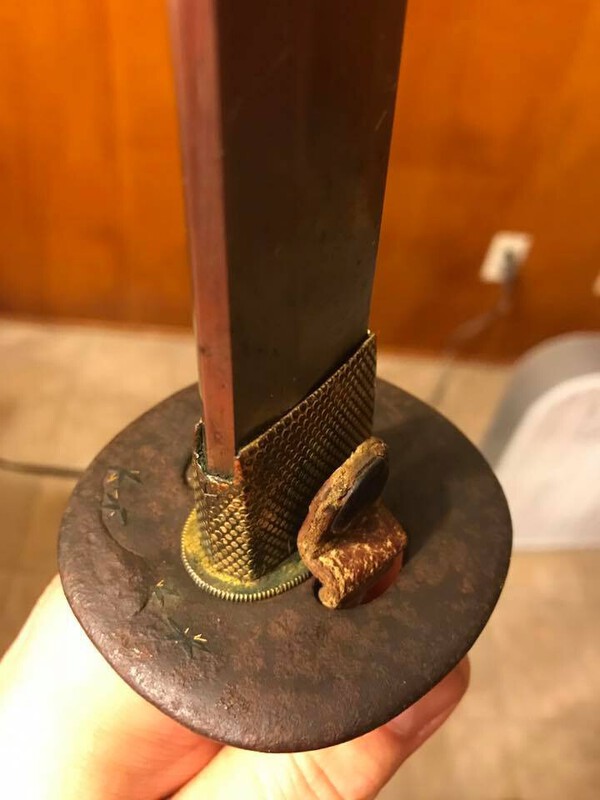-
Posts
1,690 -
Joined
-
Last visited
-
Days Won
11
Content Type
Profiles
Forums
Events
Store
Downloads
Gallery
Everything posted by Dave R
-
An older sword with a quick and dirty "going to war" alteration to the Saya! Also a very bad job of rebinding the Tsuka. There is potential there for both triumph and disappointment.
-
Still making some of the same old mistakes thankfully!
-
Lord, how I wish I could pick up katana at merely twice the price of a Wakizashi! Perhaps the market is different over here though. I do find the tsuba a bit off key though, the condition is not what I would expect to have matched with the rest of the koshirae.
-
They changed that 2 years ago at least. My last two purchases from them, Nurizaya Wood for a Wakizashi and 100g Uchiko Powder were both paid for via Pay Pal, and very easy transactions they were indeed.
-
And they are OK with Pay Pal. It is worth remembering that a lot of the better quality "local to you" dealers buy from Namikawa and then sell on to you with a markup.
-
I have a fondness for them as well, and you get a lot of sword for your money!
-
That can have been added any time in the last 80 years.
-
Another of those, is it ain't it swords. Reverse image search didn't turn up any results, so you pays yer money and you take the risk.
-
-
And how will we know one way or the other, unless we investigate, research, discuss and share?
-
It is Japanese army though, and this site is "militaria.co.za", and this page is titled "Military Swords of Japan", note the recurrent themes of Japanese and military. If it's not your thing, that's OK, you are not forced to join in the conversation. It is a gunto, new to us all, certainly to me, and a late war one and we know that because instead of dismissing it out of hand we did the research, and have added to the pool of knowledge of such. To quote my old Guru, "fight for your limitations, and they are all yours!"
-
Now would I do that, ^clutches pearls in horror.^
-
I am a sword collector, British, German, Japanese and from all over the place. Nihonto are just one area of my interest,... And Military blades (a big area of collectors interests generally.) another. Military swords sort of crop up when nations put national armies together, and medieval and ethnic collectors accept that this is a different area of collection and go elsewhere, collectors of such do not go onto Military sites and criticise collectors of Prussian Imperial Army blades for example. This sort of criticism seems to be unique to Japanese sword collecting. When Japan decided to "modernise" they took sword production to another place, while recognising and valuing their traditions. Perhaps Japanese sword collectors should do the same. Just saying, German collectors love the late war ersatz products, and respect them as a nation fighting to the end......
-
And well done to you to admit this. There is currently a lot of of research and revelation about these late war swords that upsets all the old certainties. They are not nihonto but they are "end of series" for Japanese swords made for use in combat. Some better, some very much worse, all carried by proud members of the Imperial Japanese Army, prepared to die for their country, and to be respected as such.
-
As this thread progresses it gets more interesting, and we do seem to be finding an actual type appearing. As has been said, given the actual spread of the IJA geographically it would be no surprise at all to see locally made equipment, especially as the war dragged on.
-
I agree, it is at least a contender and certainly not a Chinese fake. Some people on this site are all to quick to label anything they don't recognise as a fake, I wonder if they get a thrill out of it?
-
Interesting the two mekugi-ana, with the second one placed like an NCO blade. Is that one actually used, or left vacant?
-
One of the questions that comes to my mind with these replicas, is what are the mounts made of, are they copper alloy (brass) like the originals, or the plated tin/zink alloy beloved of the Chinese wall hanger?
-
From the KASHIMA sisters http://www.ksky.ne.jp/~sumie99/ubumumei.html A gold inlay of smith's name is maker's name that was done at the same time of shortening the blade, being sorry the signature disappears. Names that written with lacquer are attributed name. A red lacquer is on the original unsigned tang. A gold lacquer is on the shortened tang. http://www.ksky.ne.jp/~sumie99/tang.html
-
I just went and checked again, and though of quite different weights and styles they both have a nagasa of 21 inches and just one mekugi ana in the unsigned nakago. Are they wakizashi of unusual length, or short katana.
-
-

TOTAL N00B gets BURNED on OVERPRICED FAKE SWORD
Dave R replied to Professor Zhirinovsky's topic in Nihonto
I have pics of war era Showato and Gunto swords with all sorts of tsuba, plain iron ones being quite common, sometimes the complete mount is otherwise regulation but for the tsuba. I have a theory that an officer who expected real combat would often fit an iron or steel tsuba, to cut down on glitter, and better protect the hand. A good blade will cut through brass guards. -
Thanks, I had misheard and thought Hanwei.









